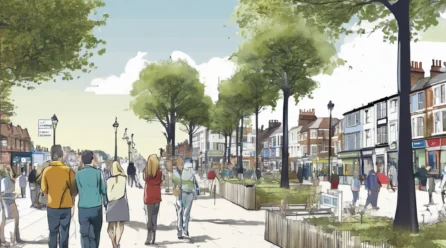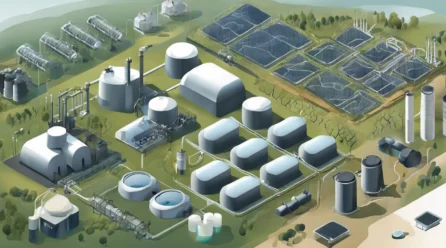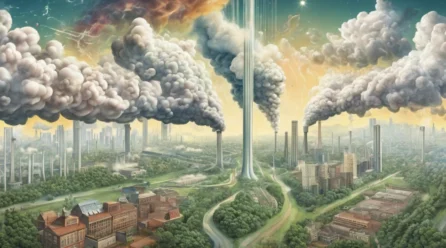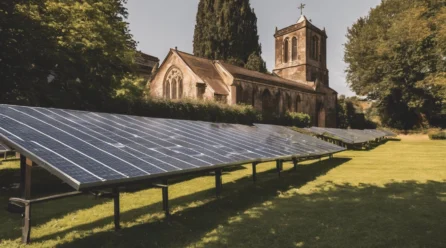Climate Crisis
Campaigns
“David is educating people to the wide-ranging benefits conferred by this remarkable style of construction that holds the key to combatting the Climate Crisis in conjunction with recapturing the levels of commerce and enterprise enjoyed before.”
Climate Crisis
The climate crisis is the single biggest threat to our planet and ourselves. The evidence is clear, the climate is changing at an alarming rate, and we cannot afford to ignore it any longer. The effects of climate change are already being felt around the world, as extreme weather events such as hurricanes, floods, droughts, and wildfires become more frequent and intense. These events are not only causing economic and environmental damage, but they are also claiming lives.
But the good news is that we can still take action to prevent the worst of climate change. The first step is to acknowledge that this is a crisis that requires immediate action. This means reducing greenhouse gas emissions, transitioning to renewable energy sources, protecting existing forests, and employing sustainable agriculture practices. Governments, businesses, and individuals all have a role to play in solving the climate crisis.
We must act now to prevent irreversible damage to our planet and ensure a livable future for generations to come.
As the effects of the climate crisis continue to intensify, the urgency to take bold and decisive action to mitigate its impact has never been greater. Four key strategies that can play a crucial role in combating climate change are the Green Plan, Tree Planting Priority Routes, Old Build Retrofitting, and Carbon Capacity of old builds.
Campaigns
Green Plan
A comprehensive Green Plan is essential in transitioning towards a sustainable future. This multifaceted strategy encompasses initiatives such as renewable energy deployment, energy efficiency improvements, waste reduction, and sustainable transportation solutions. By setting clear targets, implementing regulations, and incentivizing green practices, a Green Plan can help reduce greenhouse gas emissions, protect natural resources, and build a resilient and low-carbon economy.
David has outlined his 2021 Green Plan following his own direct canvassing and observations of the core steps that will make the most substantial difference in the short, mid, and long-term future.
Tree Planting Priority Routes
Tree planting plays a vital role in sequestering carbon dioxide, improving air quality, and enhancing biodiversity. Focusing on planting trees along priority routes, such as urban streets, highways, and waterways, can maximize the benefits of tree canopy cover in mitigating the effects of climate change. Trees not only absorb carbon dioxide and release oxygen but also provide shade, reduce urban heat island effects, and enhance the aesthetic appeal of the built environment.
David has been continuing to successfully advocate for the installation of greenery, predominantly tree planting outside busy commuter routes including Rail Stations that are often congested.
Old Builds Retrofitting
Retrofitting existing buildings to improve energy efficiency and reduce carbon emissions is a cost-effective way to address the climate crisis. By upgrading insulation, installing energy-efficient heating and cooling systems, and incorporating renewable energy technologies, old buildings can significantly decrease their environmental footprint. Retrofitting not only reduces operational carbon emissions but also enhances occupant comfort, lowers energy bills, and prolongs the lifespan of existing structures.
David has assisted the Local Authority through his ongoing restorative work and raising awareness of key items to secure prestigious grant funding support from Central Government to make the main Town Halls in the Borough as energy-efficient as possible.
Carbon Capacity Benefits of Old Builds
Assessing the carbon capacity of old buildings is crucial in understanding their environmental impact and identifying opportunities for improvement. By calculating the embodied carbon in building materials and construction processes, stakeholders can determine the carbon footprint of old builds and develop strategies to reduce emissions. Reusing existing materials, adopting sustainable construction practices, and incorporating carbon offsetting measures are key steps in maximizing the carbon capacity of old buildings and minimizing their contribution to climate change.
David has been a stalwart for the case of protecting Old Builds against harmful demolition that would release plumes of carbon reserves being released into the atmosphere. Wherever possible he has worked with key stakeholders to prevent said structures from wasteful loss from streetscapes and he continues to advocate for a full ban and reversal of this.





